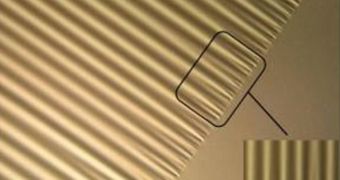Women are fascinated with facial wrinkles, while fashion experts are obsessed with eliminating the wrinkles on their clothes. One could argue that wrinkles are part of our daily lives, but scientists have yet to discover the mysteries these structures contain. Now, a team of experts managed to get past the complex nature of wrinkles, and conduct a new study on their physics. Some of the enduring uncertainties that scientists associated with these formations are now gone, the group says.
One of the most interesting aspects of wrinkle physics dealt with how materials featuring them adapted themselves upon contact with smooth, flat surfaces. The experts, who are based at the University of Massachusetts, Amherst (UMA), decided to test this by looking at how a wrinkly film of polystyrene (a common household plastic material) changed when placed on a flat spread of water. The physicists watched how the wrinkles were smoothed out, until they finally disappeared.
“"We realized something about how wrinkles end – you have an array of wrinkles, and they stop at some point – and the question is, how do wrinkles fade away at the edge, such as the top of a curtain, or the edge of a sheet?” explains UMA physicist and researcher Narayanan Menon. The expert explains that the team first applied some tension on the plastic sheet, so as to create wrinkles in it in the first place. They then observed how the superficial tension the water exerted on the sheet prevented the plastic from catching on water.
One of the most interesting conclusions the investigation had to offer was the fact that the “ironing out” of the wrinkles began taking place from the largest ones, in the center of the polystyrene sheet. The change then slowly moved towards the peripheral areas. “There's a cascade from coarse wrinkles to very fine wrinkles, till you can almost not see them at all. The unprecedented, unanticipated part of it is that it was a smooth cascade,” says Menon, quoted by LiveScience.
“These wrinkles become smaller and smaller, tinier and tinier, as they approach an edge,” concludes UMA researcher Benjamin Davidovitch. Details of the new investigation appear in the July 16 issue of the esteemed scientific journal Physical Review Letters.

 14 DAY TRIAL //
14 DAY TRIAL //